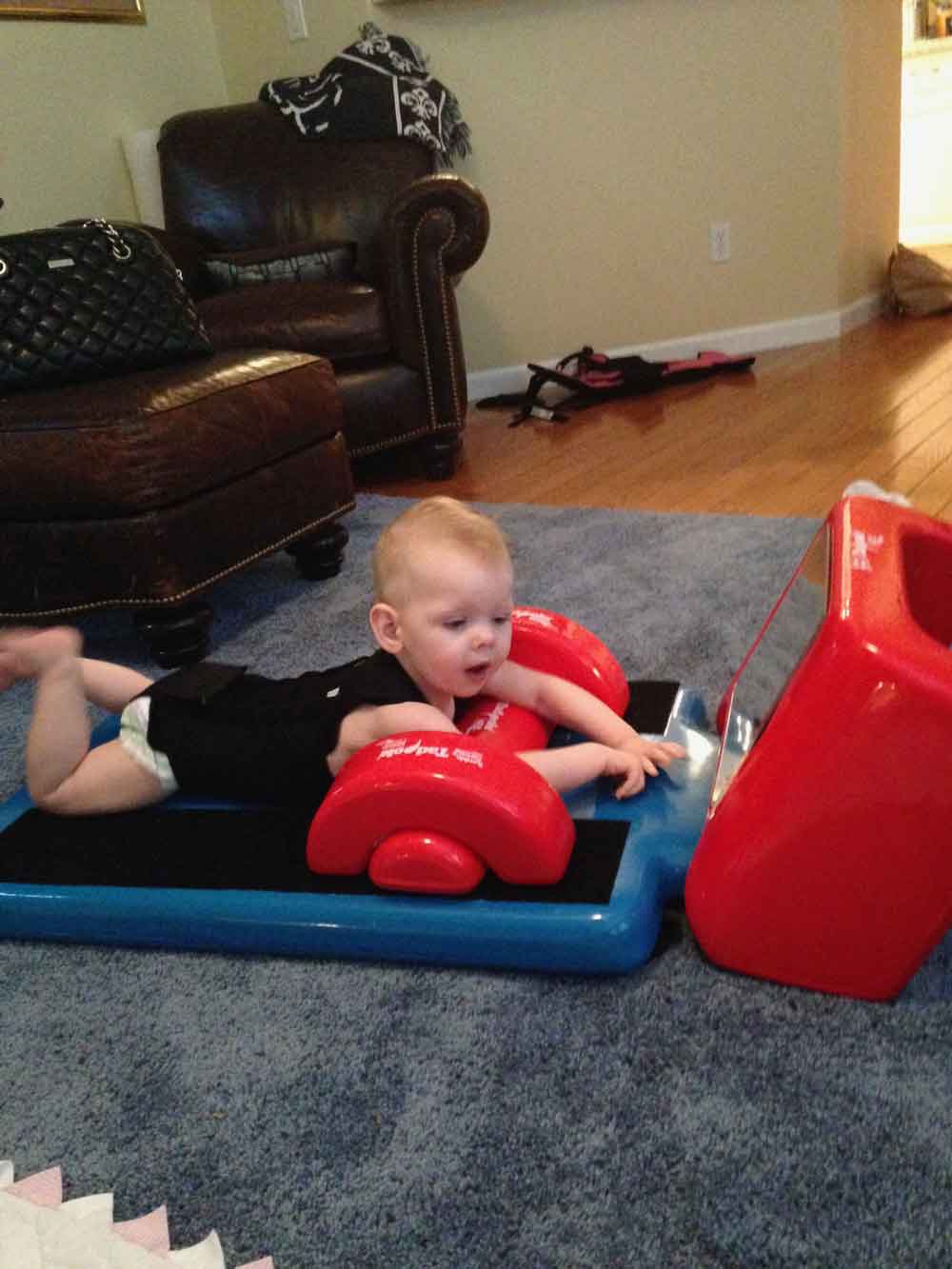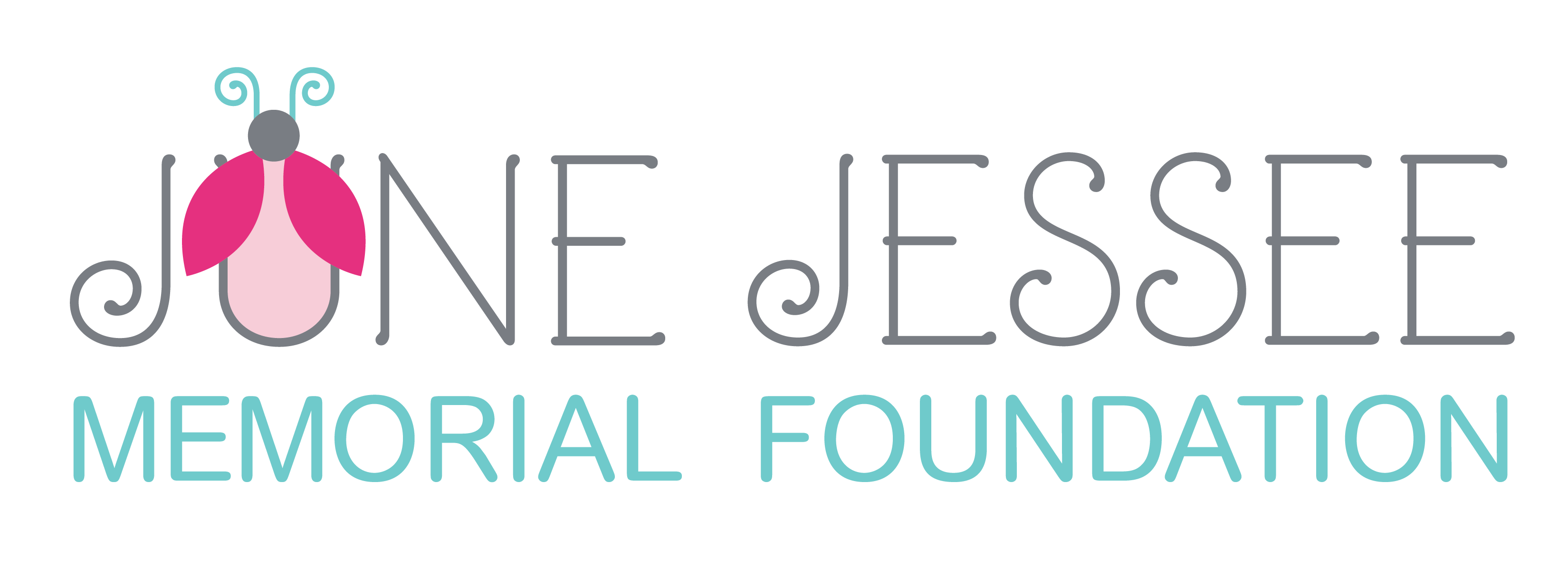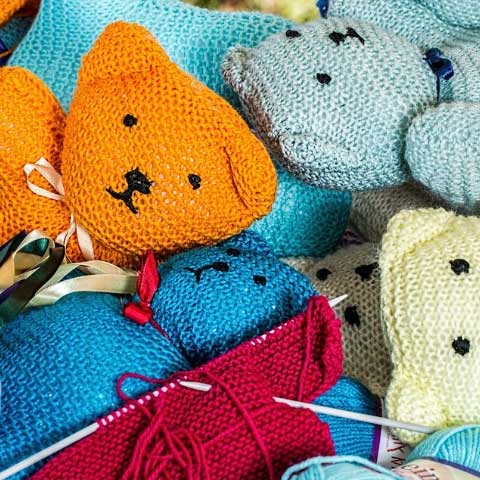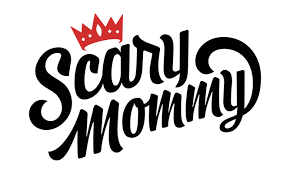Toys for Tots of All Abilities
If you’re raising a child with developmental disabilities, ordinary activities such as swinging at the park or joining Mom or Dad at the grocery store can seem overwhelming. When my daughter, June, was an infant, we were always looking for items to help position her securely because she lacked head control. We also sought devices that would enable her to interact with toys because she couldn’t pick them up with her hands to examine them.

Then we found Capable Kids and Families, a St. Louis-based resource for parents with children up to the age to seven who have developmental disabilities. Capable Kids has three main offerings: equipment lending; access to resources, and events where families can connect with each other. It’s run by Arc, a national organization that advocates for laws protecting people with disabilities and provides resources and support throughout their lifespan. Arc started in Minneapolis in the 1950s when a group of parents of children with intellectual disabilities got together to find alternatives to institutionalizing them, which was the common advice given at the time. The Minneapolis group wanted other options, and they came together to create some.
In the half-decade-plus since, Arc has grown into a national powerhouse with local branches around the country, including the one here in St. Louis that operates Capable Kids and Families. The program made a big difference in my life while caring for June. I caught up with Julia Schaffner, program coordinator for Capable Kids and Families to find out what Capable Kids and Families can do for you.
Genny Jessee: I found Capable Kids and Families so helpful when we were looking for toys that June could use. It was like something I dreamed about, and then discovered it actually existed! How did the program start?
Julia Schaffner: It was started in Rolla, Missouri, by a mom named Jean Darnell. She had twins who were born prematurely. She went through all the education processes, therapy, etc. Her twins both received services, but were hitting developmental milestones at different times. Her therapists would recommended different things for each of them, and it was a little overwhelming.
She felt very isolated, staying home with these twins, and while she loved the therapists helping her children, she sometimes wanted someone to come in and ask how she was doing. She formulated the program in her mind long before it came to be, and it started in Rolla in 2001, then in St. Louis in 2009. Now it’s also in Columbia/Jefferson City and Springfield.
Genny Jessee: How do you choose what kinds of toys and therapy equipment to carry? There are so many options, addressing all kinds of needs: motor skills, mobility, balance. How do you decide?
J.S.: We try to carry an inventory to meet a variety of different needs. We have about 1500 different items now. The toys are pricey and require frequent replacement. We purchase them from a couple companies, and get some donated. Foundations and grants typically help us cover the cost.
Genny Jessee: It seems like technology is just everywhere in games and educational resources for kids. How much of the current therapy equipment incorporates technology? And is this a good thing?
J.S.: Technological advancements have opened up a whole new world for so many kids. Children who don’t have the ability to verbalize are communicating through apps on their iPads at a very young age. Kids are learning numbers, math, how to read. Maybe they can’t read aloud, but they are recognizing words on a screen. The popular communication devices are becoming much more reasonably priced, more portable, and easier for little hands to use. When kids are engaged on their devices, it’s easier for parents to see how much they know.
But it’s always kind of a double-edged sword when it comes to technology, from the perspective of parents, therapists and educators. Everybody is carrying around devices. The downside, of course, is the addiction issue, and parents having to regulate the use of technology.
Genny Jessee: I’ve heard this from others; kids can have a huge meltdown when you take away an electronic device. Our occupational therapist said that if taking something away inspires a meltdown, you have to question what’s happening in their brain that causes that reaction.
But, on a more positive note, what’s an example of a clear improvement you’ve seen a child make using one of your library’s toys?
J.S.: There was a little boy in the program who was experiencing global delays. He was starting to walk, but still hadn’t crawled. His mom was aware of the developmental benefits of crawling, and she and the boy’s therapist really wanted him to crawl. They tried all kinds of things, but he was very opposed to being in a prone position.
They came to us, and we lent them a Jettmobile therapy scooter. He kind-of has a thrill-seeking side. The scooter is low to the ground, and kids can lie on it and propel themselves around on their stomach. He was hesitant, but once he got on it, he realized, “Wow! I can move around!” He thought it was awesome. Within a couple months of enjoying propelling himself around on the toy, he began crawling on his own. It was huge. The family had almost given up.
Genny: When I first applied, I was told there was a wait list for families who want to join the program. Why was there a waitlist and do you still have this wait?
J.S.: The way we able to enroll new families is when a family leaves. Currently, we serve 90 kids in St. Louis City and County. It’s tricky, because we don’t have a lot of a turnover. When a child enrolls in the program, he or she receives monthly home visits and can borrow from the equipment library until age seven. We don’t have a vast amount of turnover, and we run at capacity. I tell families that might need our program later to get on the waitlist now. You can always tell us later that you don’t need it anymore. I would much prefer it that way then to have them call when they really need the program.
We never want to say to existing families, “We can’t see you anymore.” We never want to cut off support in a way that would be harmful.
Genny: I remember that our Arc home support specialist, Meg, would come to our house for an hour, and talk to us. She even offered to go with us to the doctor and to the preschool for June’s Individual Education Plan meeting to take notes. Your staff members really get involved with the families they’re working with.
J.S.: Yes, but anybody is welcome to call, even if they’re not yet in the program, when they are in need of resources, and we try to find somebody who can help. We put anyone who asks on our email distribution list, and most of our events are advertised through our email blasts. We sponsor many different activities and events that give families an opportunity to meet, and anyone can come to those. On a more informal basis, we are always happy to connect individual families. If we know two families who live close to each other, we can help initiate that connection. Most families are anxious to meet other families and have that connection.
Genny: I went to a music class with June through Arc that was really awesome. It was all kids with disabilities. Usually, you’re the only one with a kid with disabilities. This felt like I didn’t have to explain to anyone what was going on. It was great.
J.S.: Yes, that was one of our formal offerings. We also hold playgroups. We have a “parent cafe” tonight. We offer the other family support components of Arc more generally.
Genny Jessee: What about adapting ordinary toys at home? I’ve definitely seen websites with tips for adapting toys, such as adding an on/off switch to an electric toy, or page extenders to books. Do think adapting toys is something families can realistically do?
J.S.: It is. We want to offer a workshop on adapting toys in St. Louis. There’s a group in the mid-Missouri area, Pascale’s Pals, that adapts donated toys to give out around the holidays in their area (and to those further away, provided someone can travel to pick it up). They, too, get more applications than they can fill. They did a workshop for families with Capable Kids and Families, Springfield, which we’d like to bring here. Parents bring in whatever toys they want to adapt, and learn to do it. It’s not terribly hard, but you need the right tools.
Genny: What could someone do to help expand or support your work?
J.S.: We are always looking for opportunities to expand the program capacity, which requires stable funding sources. We also happily accept donations.
Genny Jessee: What do you love most about Capable Kids?
J.S.: The greatest strength of our program is our families. They are amazing. They themselves are resourceful. I learn so much by interacting with them. I love when they can connect and share those resources themselves. Two of our family specialists are actually alumni of the program.
Genny Jessee: Thank you so much for your time and this great program!







